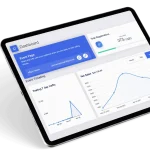
Social Selling Techniques enable sales reps to identify, engage and connect with buyers early in their buying journeys. When combined with training focused on data and insights, these best practices increase rep visibility and lead quality.
Relationship-building with potential customers takes multiple touch points; providing value from the beginning and cultivating trust are keys to success.
1. Engage with prospects
Salespeople need to establish relationships and trust with prospects as part of the sales process, using social selling techniques as part of an overall approach that includes cold calling. Social selling shouldn’t replace traditional methods like cold calling though; rather, it should supplement them.
Sales leaders must ensure their teams understand the difference between traditional and social selling, and train them correctly to engage modern buyers. This involves coaching them on how to focus more on building connections lists, sharing relevant content and engaging their audiences rather than cold outreaching.
They should also be encouraged to work collaboratively on an employee advocacy program for the company that disseminates thought leadership content to more people, expanding audiences.
2. Engage with customers
Social selling offers an alternative approach for salespeople looking to form meaningful relationships with buyers that is built upon value and trust. By connecting with prospective clients, providing valuable content, and engaging meaningful dialogues with prospects, salespeople can speed up their sales cycle by breaking through barriers such as gatekeepers or initial reluctance and speed up closing deals more rapidly.
Authenticity remains an integral component of effective social selling. Buyers prefer salespeople who are open, honest, credible and willing to challenge their assumptions in dialogue.
As a best practice, the marketing department should collaborate with sales teams to consistently create and share relevant content for every account, which helps ensure consistency and increase impact. Furthermore, analytics tools allow sales staff members to determine what types of material resonates best with audiences.
3. Share content
Effective social selling techniques rely on proven processes, including personalization and value. Sellers must identify buyers’ needs and present relevant content that demonstrates an in-depth knowledge of their businesses, which helps build trust while shortening sales cycles.
Content development and sharing allow sellers to become thought leaders in their markets. Thought leaders are 4x more likely to receive referrals from network contacts, and this further reduces sales cycles.
An effective social selling platform should include a scheduling feature to facilitate easy engagement with prospects and clients on an ongoing basis, with one unified message across multiple platforms.
4. Ask questions
Expert social sellers are constantly testing and adapting their efforts in search of the optimal way to meet their targets. One representative discovered that they could increase referrals and warm introductions by asking clients for recommendations on their LinkedIn profiles.
Maintaining an up-to-date and relevant profile is also key, enabling prospects to quickly understand your value proposition and how you might help solve their problems.
Bear in mind that sales can happen anytime and anywhere your customers are located, making social media an effective tool to build relationships that lead to sales. But it won’t do the work for you – it takes time and effort to foster these relationships and close deals successfully. Focusing on personalization with an upbeat and solutions-driven attitude will build trust quickly while shortening sales cycles significantly.
5. Follow up
Staying connected via social media is vital to building relationships with clients and prospects, especially on an individual basis. When people feel valued as individuals by you, the more likely they are to work with you in the future.
Remind them about key meeting action items and build trust through follow-ups; just don’t make this an everyday habit as this could become annoying for them and may turn them away altogether.
Share articles that highlight your clients’ successes for an effective follow up strategy that doesn’t feel salesy and keeps your client visible without bombarding them with emails. Use Hootsuite CRM to easily manage this type of communication while tracking email opens in real time.










